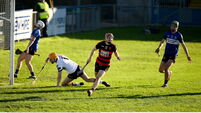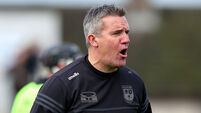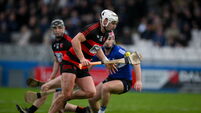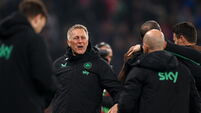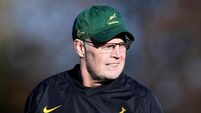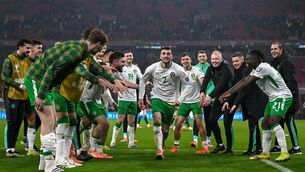Michael Moynihan: Goodbye to Mick Flannelly, a Waterford icon
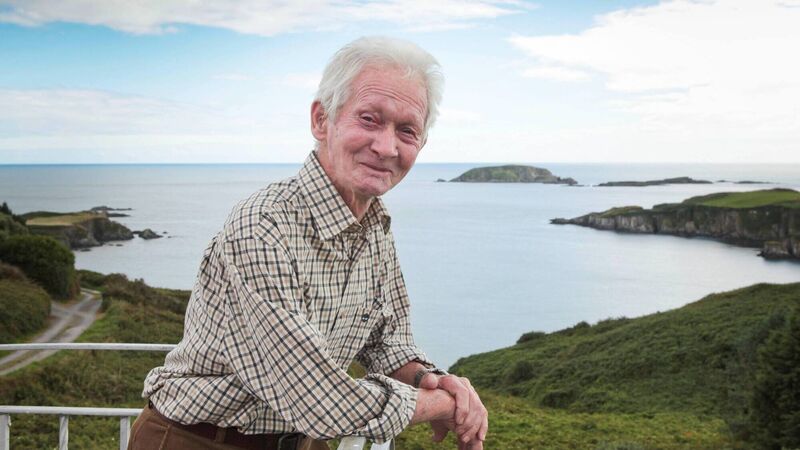
Waterford hurling legend Mick Flannelly passed away last week. Picture: Emma Jervis
Mayo isn’t the only county enduring a Gaelic games famine.
Waterford’s long wait for an All-Ireland senior title stretches back to the fifties as well, and over the weekend another link to their golden era was lost with the passing of Mick Flannelly.
As I got to know Mick over the last 25 years or so the essence of the flying wing-forward of the late fifties was still very much in evidence: I doubt his waistline was an inch greater than in his playing days, kept in check by a healthy appetite for hill-walking.
A natural modesty coexisted with a healthy scepticism in Mick.
The latter? An inclination to cheer for the US in the Ryder Cup rather than his, ah, home continent.
The former?
In his time playing he collected 15 senior championship medals in hurling with Mount Sion, who were the power in Waterford and the driving force behind their All-Ireland appearances. He also won three senior football medals to go with his minor football county medal.
But he wasn’t the one who broke down that dazzling tally for me - he was far keener on giving his brother Joe credit for outscoring him when it came to minor county titles: Joe pocketed six county minor titles with Mount Sion, outscoring Mick by two.
Space was clearly at a premium in the Flannelly sideboard.
I often pushed - gently - about his memories of playing in a time of outsize hurling personalities, and eventually wore away at his natural modesty. In the run-up to the 2013 All-Ireland final we sat down in his front room in Griffith Place to talk about 1948, the last time Waterford had won an All-Ireland minor title. He captained that team, 11 years before adding a senior medal in 1959.
Read More
I poked him for memories of the unyielding Tipperary defence he faced as the fifties gave way to the sixties, for instance. He felt the Hell’s Kitchen nickname was overstated, he said - they were as hard as other defenders, no more, no less.
“Mind you,” he added, “The odd time against Tipp you were going in from half-forward for a seventy, and the entire full-forward line would be on the ground before the ball dropped in.”
Ring he put above all others: “He was the man. Marvellous. No-one was as good as him. Any time he played against Kilkenny he came off in bits, though he was well able to dish it out himself as well; he was a hardy man, but a nice person. Very shy.”
The time he shared those memories we were sitting in his front room while Patty, his wife, gave us tea and cake. As a sketch of what the GAA means at the cellular level, he brought me to the window and pointed to the houses nearby which had sent out Martin Óg Morrissey, Sean Hayden, Larry Guinan and Seamus Power to star first for Mount Sion and then for Waterford.
The sharpest image he provided from that evening, however, was his recollection of the night before the 1948 All-Ireland minor final, which he and his minor teammates whiled away walking around Punchestown Racecourse.
In a few words he brought that scene to life - the excitable teenagers larking about on an autumn evening, nervous before the biggest day in their lives, laughter and shouts drifting up and away, out into the wide night sky and across the broad green gallops.
That evening took place all of 65 years before our conversation in Waterford, but for a few minutes we were back in Punchestown and everything was in the future - for the team, for the county, for the slim wing-forward with a blazing pace.
Condolences to Patty, Joanne and Críona, to Joseph and Ruairí, and to Dominic and James.
Back to the (small) show
Even as you read this the cheers are slowly fading in Croke Park from the All-Ireland finals held last weekend.
(I’m speaking metaphorically. Don’t write in to tell me the echoes don’t reverberate into Monday morning.)
Yes, that’s the big show. Yes, that’s the engine for the GAA as a whole. Yes, it’s the creme de la creme in operation, right in front of you.
But as always, it’s reassuring to get back to brass tacks. Yours truly was at club games the weekend before last in Cork, and it was a pleasure to roll into Carbery Rangers’ ground for Clonakilty v Ilen Rovers in the senior football championship.
It wasn’t just the event management, top class though that was - well-organised parking, good facilities, even a thought for the press with a table provided, not to mention that convenient grassy bank to one side of the pitch for spectators.
It wasn’t all down to the necessary adjustments that have to be made before throw-in either. For instance, nobody was absolutely sure if one player was going to be there because the rumour was he hadn’t made it back from Portugal in time (disclosure: he did).
It was the entirety of the experience. A good game, well run, in decent weather. For a couple of hours it was enough to make you forget about the virus - which is what occasions like that have been doing for us since the nineteenth century.
Is James McClean right? Wrong? Both?
I see James McClean was out during the week saying the Irish media was negative in its coverage of the Irish soccer team.
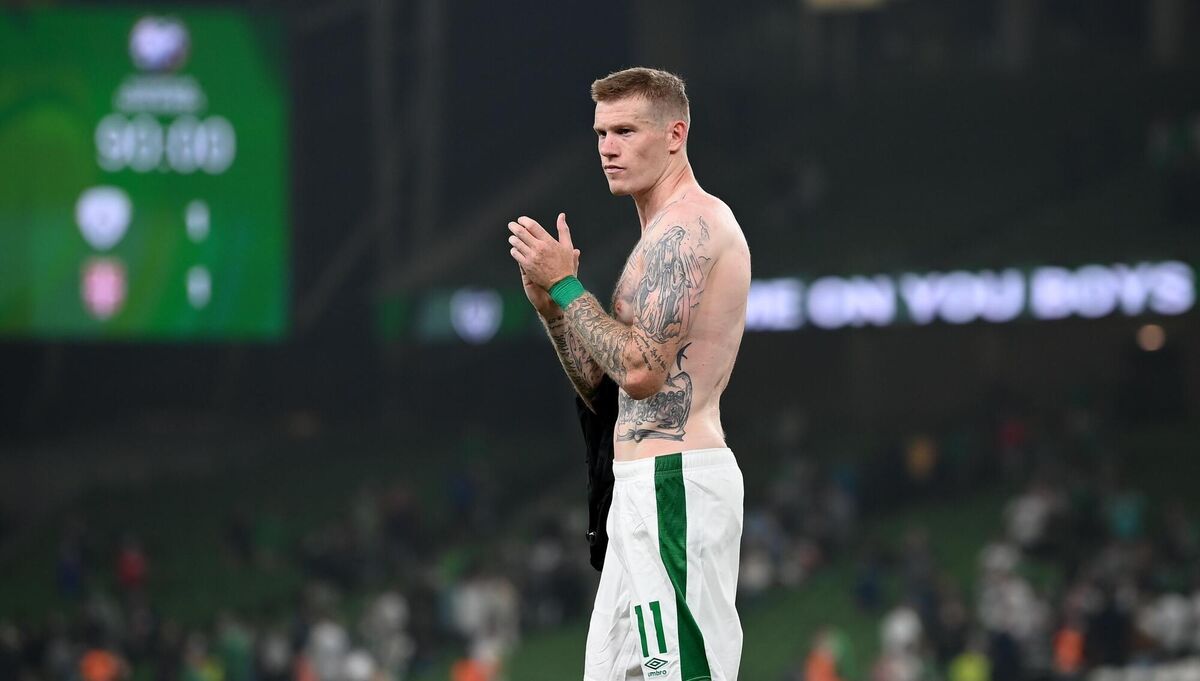
“Youse almost get a kick out of us not doing well. I do think that,” said McClean, adding: “I’ve been there, I’ve experienced it, I’ve been around now almost 10 years in the Irish team, there’s no-one going to convince me otherwise.”
Which raises a simple question.
We’re told by sportspeople of all stripes that no attention is paid to what’s going on outside the group/team/camp, so why is this supposed negativity so irritating to the Irish camp?
On second thoughts we’ll leave it because otherwise we run the risk of falling down a rabbit hole. McClean also said of the coverage: “Sometimes it’s fair, sometimes it’s not fair. Sometimes it’s a bit over the top.”
So if it’s fair, then that means it’s not negative? Or not as negative? Or justifiably negative? Or something else entirely? Or what?
The Devil in the White City (eventually)
I’m well aware that I’m not so much late to the table on this one as late to the morning-after brunch to celebrate the one-year anniversary of the event (please stop — ed), but even so: I’m enjoying The Devil in the White City by Erik Larson immensely.
I know that it came out in 2003, and that Leonardo DiCaprio optioned it for movie purposes as long ago as 2010, but the advantage of coming to a book like this now is that the initial hype subsided long ago, and it can be approached with no preconceptions.
Does that mean I don’t wish to be apprised of any plot twists or character developments? Yes, it does. Keep the spoilers to yourselves, más é do thoil é.
Contact: michael.moynihan@examiner.ie

Unlimited access. Half the price.
Try unlimited access from only €1.50 a week
Already a subscriber? Sign in

